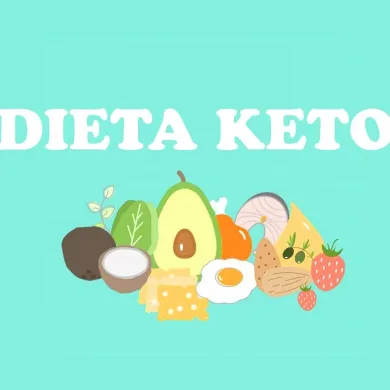The DASH Diet: Unlocking Heart Health and Wellness
The DASH Diet: Unlocking Heart Health and Wellness
In a world where dietary trends come and go, the DASH diet stands as a reliable, scientifically-backed approach to improving heart health and overall wellness. Originally developed to help combat high blood pressure, the Dietary Approaches to Stop Hypertension (DASH) has garnered attention for its broader health benefits. This article delves into the principles of the DASH diet, its benefits, and practical tips for adopting this lifestyle change.
Understanding the DASH Diet
The DASH diet was created in the 1990s by researchers looking to address hypertension without medication. It emphasizes a balanced intake of nutrients known to lower blood pressure, such as potassium, calcium, and magnesium, while reducing sodium intake. Unlike many restrictive diets, DASH encourages a varied and balanced diet that includes fruits, vegetables, lean proteins, and whole grains.
Key Components of the DASH Diet
The DASH diet’s primary focus is on nutrient-rich foods that promote heart health. Here are its key components:
- Fruits and Vegetables: These are rich in essential vitamins, minerals, and fiber. The diet recommends 4-5 servings of each per day.
- Whole Grains: Whole grains like brown rice, quinoa, and oats are recommended over refined grains. Aim for 6-8 servings daily.
- Lean Proteins: Include poultry, fish, and plant-based proteins such as beans and nuts. Limit red meat consumption.
- Dairy: Low-fat or fat-free dairy products provide calcium and vitamin D. The diet suggests 2-3 servings per day.
- Nuts, Seeds, and Legumes: These are excellent sources of protein, fiber, and healthy fats. Aim for 4-5 servings per week.
- Fats and Oils: Opt for healthy fats like olive oil and limit saturated fats. The diet allows for 2-3 servings of healthy oils daily.
- Sodium: One of the diet’s key tenets is reducing sodium intake to below 2,300 milligrams per day, ideally aiming for 1,500 milligrams.
The Science Behind the DASH Diet
The DASH diet is backed by numerous studies that underscore its effectiveness in reducing blood pressure and improving heart health. The emphasis on low sodium intake, coupled with a high intake of fruits and vegetables, helps to lower blood pressure by enhancing the body’s ability to excrete sodium and relax blood vessels.
Research also indicates that the DASH diet may reduce the risk of other chronic diseases, such as type 2 diabetes, certain cancers, and stroke. The diet’s focus on whole, minimally processed foods aligns with broader recommendations for disease prevention and health promotion.
Health Benefits of the DASH Diet
1. Lower Blood Pressure
The primary goal of the DASH diet is to reduce high blood pressure, a leading risk factor for heart disease and stroke. Studies show that individuals following the DASH diet can experience significant reductions in both systolic and diastolic blood pressure levels.
2. Improved Heart Health
By promoting a diet rich in heart-healthy nutrients and low in saturated fats and cholesterol, the DASH diet supports overall cardiovascular health. It helps lower LDL cholesterol levels and reduces the risk of developing heart disease.
3. Weight Management
The emphasis on whole, nutrient-dense foods and portion control can aid in weight loss and maintenance. The diet’s balanced approach makes it easier to stick to a healthy eating plan without feeling deprived.
4. Reduced Risk of Diabetes
The DASH diet’s focus on complex carbohydrates and fiber helps regulate blood sugar levels and may lower the risk of developing type 2 diabetes. It encourages healthy eating habits that support stable glucose levels.
5. Cancer Prevention
Rich in antioxidants, vitamins, and minerals, the DASH diet’s emphasis on fruits and vegetables may help reduce the risk of certain cancers, including colorectal and breast cancer.
Practical Tips for Adopting the DASH Diet
Transitioning to the DASH diet involves making gradual changes to your eating habits. Here are some practical tips to get started:
1. Gradual Reduction of Sodium
Begin by reading food labels to identify and limit high-sodium foods. Gradually reduce the amount of salt you add to your meals and experiment with herbs and spices for flavor.
2. Increase Fruit and Vegetable Intake
Incorporate a variety of colorful fruits and vegetables into your meals and snacks. Aim for at least half of your plate to consist of these nutrient-rich foods.
3. Choose Whole Grains
Replace refined grains with whole grains like whole wheat pasta, brown rice, and quinoa. These options provide more fiber and nutrients.
4. Opt for Lean Proteins
Choose lean meats, poultry, and fish, and incorporate plant-based protein sources such as beans, lentils, and tofu into your diet.
5. Limit Added Sugars and Fats
Reduce consumption of sugary beverages and desserts. Favor healthy fats like avocados, nuts, and olive oil over saturated and trans fats.
6. Plan and Prepare Meals
Plan your meals and snacks in advance to ensure a balanced intake of nutrients. Preparing meals at home allows for better control over ingredients and portion sizes.
7. Seek Support
Consider working with a registered dietitian or nutritionist to tailor the DASH diet to your individual needs. Support from family and friends can also help you stay committed to your dietary goals.
Conclusion
The DASH diet is more than just a dietary plan; it’s a lifestyle approach that promotes overall health and well-being. By focusing on nutrient-rich foods and reducing sodium intake, the DASH diet offers a sustainable way to improve heart health and prevent chronic diseases. With its flexibility and emphasis on balanced eating, adopting the DASH diet can lead to lasting positive changes in your health and quality of life.
As with any dietary change, it’s important to consult with healthcare professionals, especially if you have existing health conditions. Embrace the DASH diet as a pathway to unlocking heart health and wellness, and enjoy the journey to a healthier, more vibrant you.















Add comment